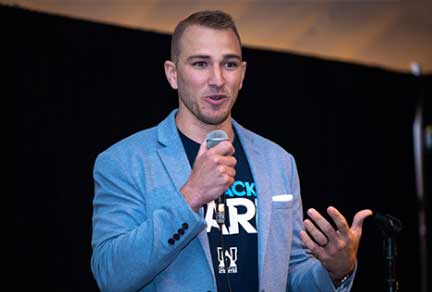End-to-end risk management: Getting the most from your program
In every clinical trial, risk management is a must. However, it can start to feel routine: add some lines to a spreadsheet, move on to the next risk, and check the box that risk management is complete.
But if risk management is treated like a repetitious obligation, we miss out on so many of its benefits.
It’s time to reframe the process. Yes, the idea of risk makes us uneasy. It’s human nature — no one wants to get (or deliver) bad news. But if we’re managing risk, we’re not waiting for trouble to happen. We’re finding ways to prevent it. By using a risk-based quality management (RBQM) approach, we can continually identify and document potential problems, addressing them before they become liabilities.
Think of risk management as the practice of good planning. Risk management helps determine the most efficient way to run a study. And it begins before the protocol is written. As a study team defines endpoints, it also determines the critical-to-quality (CtQ) factors. If those factors aren’t controlled, trial results could be invalid or unreliable. With good risk planning and management, we can minimize issues that could impact patients and the scientific integrity of the study.
So how can you make the most of your risk management program? Here’s what we focus on at Parexel.
Starting early and seeing it through. We strive for an end-to-end approach, managing risk from pre-protocol work through the entire maintenance phase.
Prior to protocol design, we evaluate the quality of the study design and potential study execution, focusing on the factors critical to the quality of the study. Next, we look closely at efficacy and safety endpoints so we can compile possible risks to critical data and processes, including processes to protect the rights of patients. Once the protocol is confirmed, we consider additional medical, scientific, regulatory, operational, and commercial risks.
After initial risks are established, we concentrate on smart monitoring strategies. There are two main sources of maintenance-phase risk: protocol amendments or changes from emerging data. If either happens, that triggers a review of the risk assessment. Sometimes the change allows us to close a risk and reassign resources accordingly. Other times, we’ll need to take action. Regardless, monitoring should always have a clear purpose, so reassessments should be prompted by real events, not arbitrary dates on the calendar.
The risk-management strategies we implement inform every aspect of our work, from conducting a site initiation visit to reviewing signals through central monitoring. We know each choice we make can help mitigate risk.
Getting specific. When evaluating risk, we want to push beyond generalized considerations. The more we anticipate, the more detailed and productive our mitigation strategies become.
Let’s say we’re concerned about patient recruitment. Naming that general risk is a good start. But what specific factors will create challenges? Maybe participants will have to make frequent trips to a study site. Or perhaps the target population is relatively small and geographically dispersed. A precise assessment allows for a more targeted risk response.
We also need to determine risk probability and likely impact. In the past, project teams might have listed every potential study risk without determining how and to what extent risks would affect study endpoints. Teams were then burdened with addressing all potential problems, regardless of likelihood or severity. But if we know which risks to focus on, we can prioritize our efforts for the greatest possible advantage.
RBQM requires critical thinking, so study teams will benefit from training that’s focused on observational and analytical skills. There are also tools to help simplify risk-management activities. One example is a risk assessment categorization tool (RACT), which guides trial staff to methodically evaluate and categorize risks.
And when considering specific risks, we like to remind ourselves that the patient is always a key stakeholder. It’s easy to focus on risk that impacts sponsors and staff — but the more we ask of patients, the more likely we are to face enrollment and retention challenges, and those challenges will have implications for the entire study. By addressing specific patient burdens in the earliest stages of a clinical trial, we can minimize potential risk, which benefits all stakeholders.
Managing risk holistically. Risk management, by necessity, is collaborative. When considering and mitigating risk, we must work across multiple functions.
For example, imagine a decentralized clinical trial (DCT) in which a wearable pulse oximeter will be used to collect critical data. When determining and planning for risk in this particular aspect of the study, we’d want input from our operations experts. How can we make the device as comfortable as possible? How can we help patients learn to use it? Medical affairs would have contributions, too — perhaps strategies for introducing health care providers to the devices. And wearables carry regulatory-related risks, so regulatory affairs should weigh in on best practices for collecting and presenting oximeter data.
Too often, citing the need for expediency or ease, a piecemeal approach to risk-management is taken, with each study function working separately to assess risk. Ultimately, however, this is less efficient, less productive, and certainly less valuable. It also obscures the risk-management process so teams can’t easily see the good outcomes of their work.
All teams share responsibility for safeguarding study endpoints. So we ask them to think broadly, considering how their risk-mitigation strategies might influence other departments, both upstream and downstream. We recommend forming cross-functional teams to address risk, considering critical data and processes first, then tackling operational, logistical, and study-management concerns.
Being proactive. Good RBQM practices keep teams ahead of potential problems. For example, instead of waiting weeks to check for gaps in data, we should be monitoring — and acting — as we go. If there’s missing or poor-quality data, we need to know as soon as possible.
If you’re monitoring data using the right signals, emerging issues quickly become apparent. Automation, machine learning, and artificial intelligence (AI) are incredibly valuable here. Aided by AI, human decision makers can analyze far more data than could ever be handled manually.
There’s a lot to consider when it comes to risk-management, but the process doesn’t need to be intimidating. We like to break it down like this: think, plan, act. Each time we get new information about a clinical trial, we consider the possible impacts on CtQ factors and endpoints. Then we make a plan for mitigating specific risks and implement it, continuing to monitor and adapt as necessary.
To give perspective to our work, we remember risk management’s most important goal: protecting patients. We’re also protecting the data and processes that are critical to study endpoints, helping us get medicines to patients faster. Patient safety and patient benefit — two more great reasons for taking a risk-focused approach to clinical research.
Related Insights
Webinar
Global trial expansion: Navigating Australia & LATAM's evolving clinical research landscape
Dec 2, 2025
Video
Part 2: Risk-based Quality Management Video (RBQM) Series
Nov 11, 2021
Playbook
Insights from the 2022 R&D Innovation Survey
Feb 17, 2023
Video
How to transition existing trials under EU-CTR
Feb 1, 2023
Playbook
The upward trend of FSP outsourcing
Sep 29, 2022
Blog
Including patients in DCT design
Sep 13, 2022
Podcast
Decentrally Speaking | Episode 2: The Shifting Roles of Pharmaceutical Depots within a Decentralized Trial Environment
May 9, 2022
Video
Part 2: Practically Speaking: Driving Clinical Transformation
Feb 9, 2022
Video
Part 1: Practically Speaking: Driving Clinical Transformation
Feb 9, 2022
Blog
Master Protocol Trials: What Are the Elements of Success?
Dec 1, 2021
Video
Part 3: Risk-based Quality Management Video (RBQM) Series
Nov 11, 2021
Video
Part 1: Risk-based Quality Management (RBQM) Video Series
Nov 11, 2021
Related Insights
Webinar
Global trial expansion: Navigating Australia & LATAM's evolving clinical research landscape
Dec 2, 2025
Video
Part 2: Risk-based Quality Management Video (RBQM) Series
Nov 11, 2021
Playbook
Insights from the 2022 R&D Innovation Survey
Feb 17, 2023
Video
How to transition existing trials under EU-CTR
Feb 1, 2023
Playbook
The upward trend of FSP outsourcing
Sep 29, 2022
Blog
Including patients in DCT design
Sep 13, 2022
Podcast
Decentrally Speaking | Episode 2: The Shifting Roles of Pharmaceutical Depots within a Decentralized Trial Environment
May 9, 2022
Video
Part 2: Practically Speaking: Driving Clinical Transformation
Feb 9, 2022
Video
Part 1: Practically Speaking: Driving Clinical Transformation
Feb 9, 2022
Blog
Master Protocol Trials: What Are the Elements of Success?
Dec 1, 2021
Video
Part 3: Risk-based Quality Management Video (RBQM) Series
Nov 11, 2021
Video
Part 1: Risk-based Quality Management (RBQM) Video Series
Nov 11, 2021



